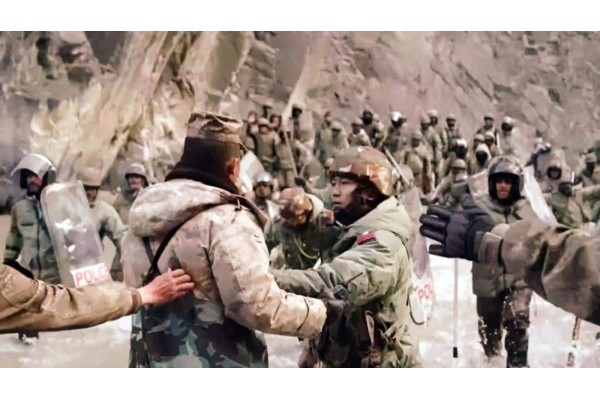It’s interesting to note how the Chinese media, which is largely state-controlled, covered the clash in the Galwan Valley on June 15, 2020. Understanding China’s narrative is crucial to comprehend its larger perspective and evolving stance on India.
First and foremost, Chinese media gave limited prominence to the Galwan crisis. News about the clash, seen as the most serious in many years, appeared under the headline India-China ‘border talks’, in an obvious effort to downplay the incident. One could even describe this as defensive going by the orchestrated campaign of denying any wrongdoing and putting the blame on India.
On June 17th, People.cn, a major Chinese news portal, published two articles on the incident without explicitly mentioning the number of casualties on the Chinese side. These articles likely aimed to present China’s perspective on the border dispute without delving into the specifics of the clash including how or why it happened, or casualties.
On June 19th, an article in the English language China Daily titled “Talks only way to resolve Sino-Indian border dispute”, acknowledged that talks had taken place in early June to ease tensions but claimed that the “Indian intrusion on June 15th“ led to a deadly fight with casualties on both sides. Chinese officials accused Indian troops of crossing the LAC and initiating the violence and the media echoed this narrative, aiming to deflect international criticism and protect China’s image.
In contrast to the 24×7 coverage of the Galwan clash by Indian media across all platforms, and the detailing of the numbers of those killed, China kept mum on their casualties. It was not until February 2021, that Chinese media gave details of two PLA soldiers who lost their lives during the clash. This delay in reporting may have been a strategic decision to control the narrative and manage public sentiment.
Following the crisis, Chinese media and officials increasingly framed India as the aggressor in the Galwan crisis. They highlighted India’s military buildup, infrastructure development, and alleged violations of the LAC as provocative actions that led to the clash. China positioned itself as defending its sovereignty and territorial integrity, seeking to shape the narrative and project India in an unfriendly light. In recent times, Chinese media has focused on highlighting China’s efforts to improve infrastructure along the border region, including in the Galwan Valley. Reports showcased the construction of roads, bridges, and other facilities, framing these developments as part of China’s legitimate activities in the disputed areas.
Within China, the Galwan crisis was used to spur nationalistic sentiment and rally support for the government’s position. The Chinese Communist Party (CCP) leveraged the clash to reinforce the narrative of China’s rise as a global power and to rally the public behind the leadership’s handling of the situation. Nationalistic fervour was stirred up through patriotic displays, public demonstrations, and calls for unity against perceived external threats.
Chinese media has gradually reduced coverage of the Galwan incident in recent times. Instead, the focus has shifted towards emphasizing stable and cooperative bilateral relations with India. Reports often mention the need to return to “normalcy”, underscoring the point that the “border is stable”.
















